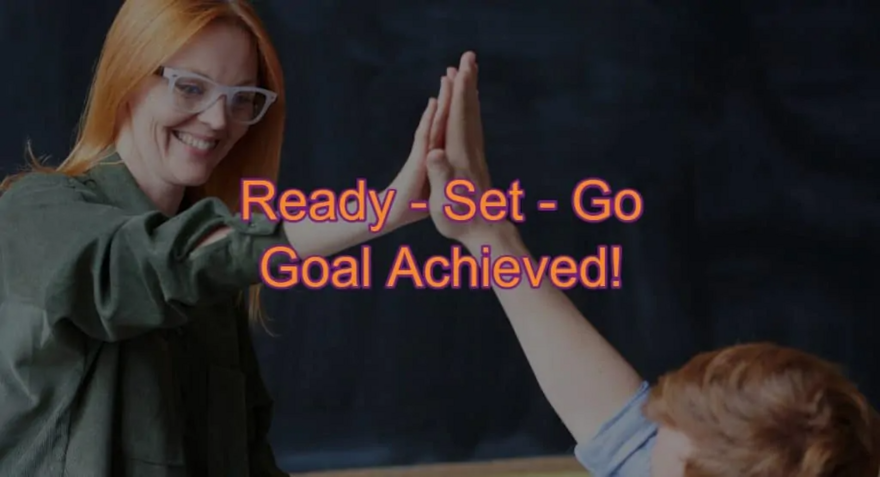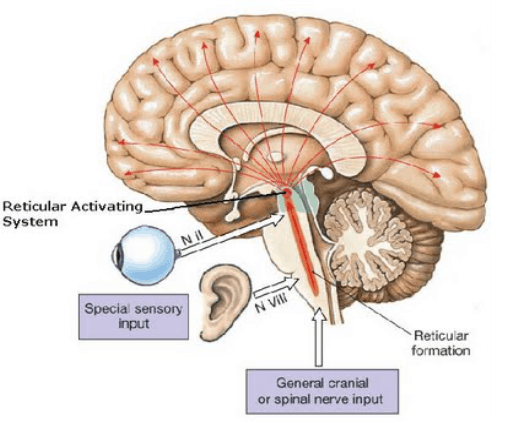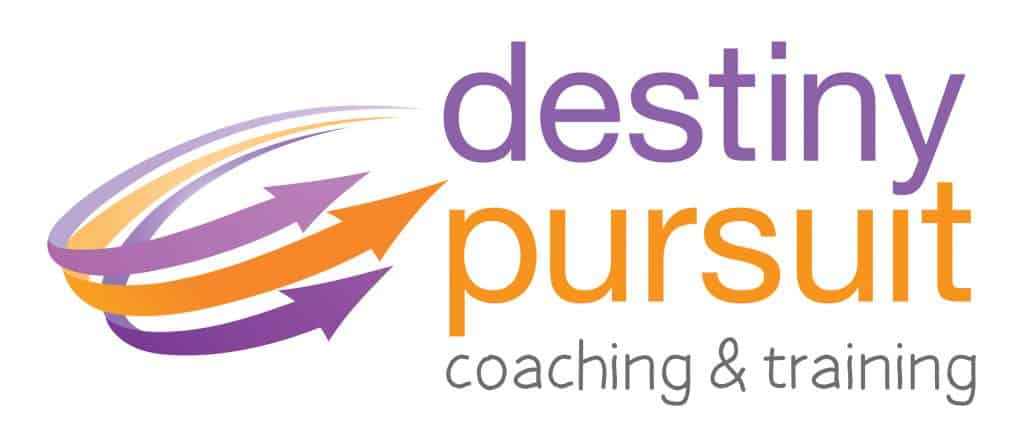Ready - Set - Go = Goal Achieved

Goal Achieved: How to Achieve your Goals the SMART Way
In my last post, I explained how to focus on what you DO want and the end in mind to enable achieving your goals.
With the end in mind it is now time to DO what needs to be done to HAVE the success you have decided to have.
Review The Be – Do – Have Model
Our programs provide powerful and effective strategies you can use to maximize your results and achieve the business success you have decided to get.
The Art of Results Creation depends on consistently managing who you being, what you are doing and being clear about what you want to have. Often I see business people finding themselves caught in a cycle of human doing.
Everything in business follows the BE-DO-HAVE model and yet, most people approach their business the other way around.
With the Be - Do - Have Model, the key is to:
Be – who are you being and how do you see yourself? Who do you want to Be?
Do – what are the choices, decisions and actions you make that move you towards or away from your vision? What impact are those choices, decisions and actions having?
Have – evaluate whether the outcomes from your choice, decision and actions are to be repeated or whether it’s time to change your outcome.
Starting with the End in Mind
First you start with the end in mind – your vision, what you have decided you will HAVE.
Defining what you will HAVE is vital to your success – remember your ultimate purpose.
And after defining your ultimate purpose you need to decide what you will DO to achieve that – this is where your planning is critical.
If you begin the next year without deciding the END you have in MIND where do you think you will end up? Your planning captures your decision about what you will focus on.
BE-DO-HAVE - all 3 components are essential to you building your success and having the life you want.
READY SET GO - and how to achieve them the SMART way
"Alice went on. Would you tell me, please, which way I ought to go from here?
(Lewis Carroll, Alice's Adventures in Wonderland)
That depends a great deal on where you want to get to, said the Cat.
I don’t much care where – said Alice.
Then it really doesn’t matter which way you go, said the Cat."
As the Cheshire cat observed, without deciding where you want to go, choosing the way to get there is not important. Like Alice, a business and the people in the business need to determine their destination before deciding on the way they will go to get there. This is the main function of a goal. It should define the business’s directions and communicate this clearly. Ideally the goals also provide an emotional focus for the people in the business so they can feel committed to what the business stands for.
The Australian results for most small businesses are not pretty – most fail within the first 5 years – especially when they turn over less than $50k per year. For many business owners these failures cost them not only their sense of success, but often leaves them with significant debt, bad credit ratings and in some cases loss of property.
If you are in business your success depends on knowing where you are going – if you choose the path of Alice – the likelihood of your business surviving is getting slimmer and slimmer every day – and that is just surviving with no consideration of succeeding!
Setting your business goals tells your unconscious mind what to look for – then it can help you achieve it. Whatever you are focused on you will see/hear/feel to the exclusion of all else. In fact what you focus on is what fills your mind. This means that if you are focused on what you do not want or what you are not getting, there is not much room for anything else to be processed in your conscious mind.
Which means there is not room to focus on WHAT YOU DO WANT!
The Power of Focus
Understanding how we take information in from the outside world into our neurology and then process it and turn it into behaviour OPENS up so many more choices for you. Because when you have this understanding you then have the freedom to take control and choose your focus rather than feeling trapped, locked down, out of control - just REACTING, REACTING, REACTING all the time like Pavlov’s dogs – ding goes the chime and you salivate – no control, just response.
We know from extensive cognitive research that humans are limited in what they can pay attention to and process. Mihaly Csikszentmihalyi in his book Flow - published in 1990 identified that at every moment our unconscious mind is bombarded by at least 2 million bits of information. This information comes in through our 5 senses:
- Visual - See
- Auditory - Hear
- Kinesthetic – Feel (touch)
- Olfactory - Smell
- Gustatory - Taste
To reduce the volume of information from the external world to a manageable volume we use three primary actions – we DELETE, DISTORT and/or GENERALISE the information
And cognitive research has demonstrated that you can only focus on approximately 110-134 pieces of information at a time – then you choose which of those 110-134 pieces are important enough for you to notice and process.
It works sort of like a torch in a dark room – it is impossible for you to see everything in the room at the same time. You can only see where you shine your torch.
What are you shining your torch on?
Some people choose to focus on what they DON’T want – whilst others choose to focus on what you DO want! Some people focus on what they CAN’T do whilst others focus on what they CAN do; some people focus on how HARD learning is, whilst others focus on how EASY it is getting now.
Whatever you are focused on you will get to be right about because you can only see/hear/feel that to the exclusion of all else.
The critical point here is how do you choose which pieces you will pay attention to?
You Get What You Focus On,
So Focus on What You Want!
The Cognitive Science of Goal Setting
Every function that a human being performs, consciously or unconsciously, is controlled by some section of the brain. The Reticular Activating System (RAS) whilst only a miniscule part of the brain plays a major role in controlling your sleep, your muscle actions, your focus, your breath and your heart beat.
The true power of the RAS lies on its capability to automate (in NLP these automated processes are called strategies) human’s awareness, motivations and focus towards things. This miniscule human part is in charge of achieving your dreams and desires in your life.
The main significance and beauty of the RAS is to focus on and direct our concentration to the “important” things and evade the distractions, the “useless” things. It is involved in sorting out the millions of ideas and billions of pieces of information that our brain receives - filtering and modifying (deleting, distorting and generalizing) the information so we will not be backlogged or overloaded. It takes the “important information” and sorts out similar patterns that are already present in the brain (things you see, hear, feel, smell, taste that are linked to the “important information” are noticed).
RAS is similar to a camera in brain – you choose what you want to take a picture of, focus on that to the exclusion of everything else – and then take the picture. Later you have the picture of what you focused on and everything else (not included in the shot) is deleted.
The RAS is located at the base of the human brain stem in between the medulla oblongata and the mesencephalon and is made up of neural fibres that run though the brain and a network of neurons.
Although it is only the size of a small finger, research has established that it exercises great influence over our cognitive capabilities.

Goal Setting
Choosing goals is like programming your RAS and like all good programs the clearer it is the more efficient and effective the RAS will be when searching for your goal. This is WHY you always start with the END in mind and ensure your goal is crystal clear.
If your mind is filled with “negative” things every time (as in things that are not part of your goal), then the RAS in the brain will find ALL the information related to that and make that information even more crystal clear to you.
However as the RAS is programmed by your UNCONSCIOUS mind and not through your conscious mind then the goal you choose must also be something the UNCONCIOUS mind ACCEPTS – if not, your inner saboteur will emerge!
There are a number of techniques to ensure your UNCONSCIOUS mind accepts your goal - firstly the goal which you have prepared should be crystal clear – you should know what you will see, hear, feel, smell and/or taste when you achieve the goal.
You should have some emotional attachment to achieving the goal – ideally you are passionate about it and if you are also clear about how the goal will meet your top 3 or 4 core needs then your unconscious mind has some investment in you achieving the goals. This process brings both conscious and unconscious minds into alignment – which is where the real magic can happen!
This small part of the brain is said to have a special power and the mastery of this focusing skill leads to the attainment of goal, dreams and desires. The RAS is viewed as the power inside the brain.
When we focus on the things that we desire (our goals) we can make it possible for our body and our RAS to work hand in hand in transforming a focused idea into the physical achievement of your dreams.
Setting Your Goals
Sometimes people think they have goals when what they really have are nice ideas, or things they “wish” for. Wishing, wanting and hoping are great things to do – they are not however a replacement for goals because your RAS knows the difference!
Other people say their goal is “To be Happy” or to feel “good” – a feeling is not a goal either. Feeling nice, good and happy are emotional states – you can change your emotional state at any moment – watch a sad movie, you change your state, watch a funny movie you change your emotional state.
You can identify a goal because to achieve it will always require some STEPS on the way. If there are no STEPS required then it is not a goal. And there are ways to set goals that make it unlikely you will ever achieve them and other ways to set goals that ensure you will achieve them. One of these ways is to make sure your goals are:
SMART Goals
Specific - Measurable - Achievable - Realistic - Timely and Towards
Specific:
A specific goal has a much greater chance of being accomplished than a general goal.
Ask:
- Who is involved?
- What, specifically, do I want to accomplish?
- Where will it happen?
- What are the requirements and constraints?
Example: A general goal would be, “I want to get fit.” A specific goal would be to, “Join a gym, go 3 days a week and eat take-away no more than once a week for 6 months.”
Measurable:
Establish concrete criteria for measuring progress toward the attainment of each goal you set.
Ask:
- How much?
- How many?
- How will I know when it is accomplished?
Achievable:
If another person on the planet has done it then I can too. All I have to do is:
- Find out HOW they did it;
- Be really committed to achieving it no matter what;
- Take whatever action is required to get me from where I am now to where I wan to be;
- Check I am on track as I progress towards the goal;
- If I am not on track, adjust my behaviour to get back on track;
- Have a real big celebration as I arrive!
Realistic:
To be realistic, a goal must represent an objective toward which you are both willing and able to work. Your goal is probably realistic if you truly believe that it can be accomplished. Additional ways to know if your goal is realistic is to determine if you have accomplished anything similar in the past or ask yourself what conditions would have to exist to accomplish this goal.
Timely:
A goal should be grounded within a time frame. With no time frame tied to it there’s no sense of urgency. If you want to lose 10 kgs, when do you want to lose it by? “One day” won’t cut it. Your unconscious mind doesn’t respond well to generalities. Your goal must be concrete for your unconscious mind to gear itself towards it. You need to anchor it within a timeframe, (eg “by May 1st”), then you’ve set your unconscious mind into motion to begin working on the goal.
Towards:
Attracts you to it – it is What you WANT!
Time to set your SMART Goal - work through this framework and go to our Facebook Page and share your Goal
Joanne Clark
Joanne Clark is an Internationally accredited Master Trainer of NLP who has been delivering NLP training since 2011. Being on her feet in front of training rooms is where Jo loves to be and her passion for inclusive and immersive training that delivers outstanding learning outcomes is apparent to everyone in her training rooms. On average Jo delivers 140 days of training per year in addition to online webinars, guest speaker events and group coaching.
“NLP is at the core of all my training and coaching, it is at the core of who I am, how I interact and connect with people. I am absolutely passionate about spreading the NLP tools across the planet as I endeavour to support Robert Dilts’s vision of Creating a world to which people want to belong.” Joanne Clark
Certified Master Trainer of NLP; Master Practitioner NLP, Hypnotherapy & Matrix Therapies; Performance Coach; Cert IV Coaching; Advanced Practitioner in Coaching; Cert IV in Business; BA(Hons); Majors in Sociology and Psychology; Parent Education Leadership Training (PELT) Certificate; Mother of four children; Private Pilot (PPL); Diploma in Life Coaching


0 comments
Leave a comment
Please log in or register to post a comment